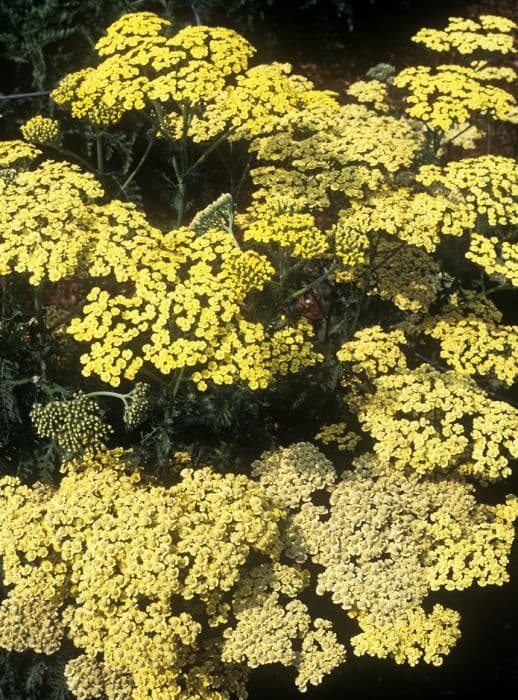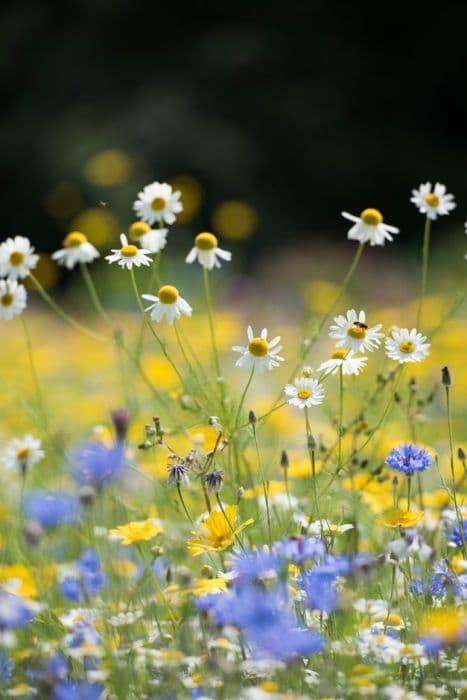Dahlia Dahlia 'Twyning's Smartie' (Sin)

ABOUT
Dahlia 'Twyning's Smartie' presents a stunning display with its exquisite flower formation that captures the onlooker's eye. The blooms are characterized by their vibrant, multicolored petals which exhibit a striking blend of white and purple-pink shades, giving the flowers a candy-like appearance that is both playful and elegant. Each petal is arranged in a precise, orderly fashion, radiating outwards from a central point to form a symmetrical shape typical of dahlias. The blossoms have an overall cheerful and bold presence that is further enhanced by the contrast of their hues against the lush green foliage. The leaves are sizeable and have a toothed edge, contributing a robust and healthy backdrop for the vividly colored flowers. As these plants blossom, they create a spectacular display of color and form, making them a standout addition to any garden or floral arrangement.
About this plant
 Names
NamesFamily
Asteraceae.
Synonyms
Dahlia, Garden Dahlia, Georgina.
Common names
Dahlia 'Twyning's Smartie'
 Toxicity
ToxicityTo humans
Dahlias, including the variety 'Twyning's Smartie,' are generally considered non-toxic to humans. Therefore, there would typically be no symptoms of poisoning, as the plant is not known to be harmful if touched or accidentally ingested in small quantities. However, it is always advisable to avoid eating ornamental plants due to potential pesticide residue and the possibility of individual allergic reactions.
To pets
Dahlias, such as 'Twyning's Smartie,' are not known to be toxic to pets like cats and dogs. Ingesting parts of the flower may cause mild gastrointestinal upset in some pets due to the unfamiliar plant material, not because of inherent toxicity. Symptoms could include vomiting or diarrhea if a pet consumes a significant amount of the plant, but serious toxicity is unlikely.
 Characteristics
CharacteristicsLife cycle
Perennials
Foliage type
Deciduous
Color of leaves
Green
Flower color
Mixed
Height
4 feet (1.22 meters)
Spread
2 feet (0.61 meters)
Plant type
Bulb
Hardiness zones
8
Native area
Mexico
Benefits
 General Benefits
General Benefits- Ornamental Value: Dahlia 'Twyning's Smartie' provides visual interest in gardens and landscapes with its vibrant and diverse colored blooms.
- Pollinator Attraction: Attracts bees, butterflies, and other beneficial insects, supporting biodiversity in the garden.
- Long Blooming Season: Blooms from mid-summer until the first frosts, providing extended periods of beauty.
- Cut Flowers: The blooms make excellent cut flowers, with a vase life of 5-7 days, enhancing indoor decor.
- Variety of Uses: Suitable for flower beds, borders, and containers, offering versatility in garden design.
- Easy Propagation: Can be easily propagated through division or cuttings, making it simple to increase stock or share with others.
- Color Variety: Offers a spectrum of colors, which can be used to create themed gardens or color-specific designs.
- Community Activities: Often used in flower shows and community garden competitions, serving as a source of local engagement and pride.
 Medical Properties
Medical PropertiesThis plant is not used for medical purposes.
 Air-purifying Qualities
Air-purifying QualitiesThis plant is not specifically known for air purifying qualities.
 Other Uses
Other Uses- Dye production: The petals of dahlias can be used to create natural dyes for textiles, offering an eco-friendly alternative to synthetic dyes.
- Insectary plants: Dahlias can attract beneficial insects to the garden, such as bees and butterflies, which can help pollinate other plants.
- Photography: Dahlias, with their vivid colors and diverse forms, are popular subjects for photographers and artists.
- Floating decorations: The blossoms can be floated in a bowl of water to create an elegant and colorful display for events or home decor.
- Edible flowers: Some dahlia petals are edible and can be used to add color and a unique flavor to salads and desserts.
- Floral water: Petals can be steeped in water to create a lightly scented floral water suitable for use in homemade cosmetics or room fresheners.
- Culinary garnish: Dahlias can be used as an attractive edible garnish on cakes and pastries.
- Educational tool: Dahlias can be used in schools and educational programs to teach about plant biology, hybridization, and horticulture.
- Companion planting: Dahlias may help to deter certain pests when planted in proximity to vulnerable crops or ornamental plants.
- Soil health: The cultivation of dahlias can contribute to soil health by providing aeration and organic matter when the plants decompose.
Interesting Facts
 Feng Shui
Feng ShuiThe Dahlia is not used in Feng Shui practice.
 Zodiac Sign Compitability
Zodiac Sign CompitabilityThe Dahlia is not used in astrology practice.
 Plant Symbolism
Plant Symbolism- Elegance and Dignity: With its structured blooms and striking appearance, the dahlia often represents elegance and dignity, reflecting a graceful presence.
- Change and Variety: Dahlia 'Twyning's Smartie' comes in a variety of colors and forms, symbolizing diversity, change, and embracing new adventures.
- Commitment and Bond: Because dahlias bloom for extended periods, they are frequently associated with long-lasting bonds and commitments in relationships.
- Creative Spirit: The intricate petals of the dahlia can be seen as a nod to creativity and inspiration, celebrating artistic expression.
- Inner Strength: A symbol of inner strength, the dahlia stands tall and blooms boldly, reminiscent of personal fortitude in challenging times.
- Wealth and Prosperity: The lush, full-bodied nature of the dahlia's bloom also lends itself to being a symbol of wealth, prosperity, and bounty.
 Water
WaterWater your Dahlia 'Twyning's Smartie', commonly known as Dahlia, by providing it with a consistent amount of moisture without over-saturating the soil. During the growing season, Dahlias generally require watering two to three times per week, depending on climate conditions. The soil should be allowed to dry out slightly between waterings to prevent root rot. Apply water directly to the base of the plant, avoiding wetting the foliage to reduce the risk of fungal diseases. Typically, Dahlias need about 1 to 2 gallons of water per week, depending on the weather and soil drainage.
 Light
LightDahlias, including the Dahlia 'Twyning's Smartie', thrive in a location that receives full sun for at least 6 to 8 hours a day. The best spot for these plants would be in an area of your garden that is exposed to direct sunlight for the majority of the day without being shaded by trees or buildings. Avoid planting in areas where they may be subjected to strong winds which can damage the large blooms and sturdy stems.
 Temperature
TemperatureThe Dahlia 'Twyning's Smartie' does best in temperate conditions, ideally between 60°F and 75°F. Dahlias can survive temperatures as low as 50°F, but they should be protected from frost. Extremely high temperatures over 90°F may stress the plant and reduce blooming. It's important to plant Dahlias after the danger of frost has passed in spring to ensure a healthy growing season.
 Pruning
PruningPrune your Dahlia 'Twyning's Smartie' to encourage strong growth, improve air circulation, and shape the plant. Deadhead spent flowers regularly to promote continuous blooming. Cut back the stems to about 4 inches above the ground level after the first frost kills the foliage, which usually happens in the fall. Additionally, if your Dahlia is particularly tall or produces large flowers, you may need to prune to stake it properly to support the weight of the blooms.
 Cleaning
CleaningAs needed
 Soil
SoilDahlias require a well-draining soil with a pH range of 6.5 to 7.0. For the best soil mix, combine two parts garden soil, one part peat moss, and one part perlite or coarse sand to ensure proper drainage and aeration. Add a balanced, slow-release fertilizer to the mix before planting.
 Repotting
RepottingDahlias, including 'Twyning's Smartie', should be repotted annually. They are typically replanted in the spring after the last frost when the tubers have been stored for the winter. Ensure each tuber cluster has eyes or growth points.
 Humidity & Misting
Humidity & MistingDahlias prefer moderate humidity levels but are quite adaptable and do not require specific humidity conditions. Avoid excessively high humidity to prevent fungal diseases, ensuring good air circulation around the plants.
 Suitable locations
Suitable locationsIndoor
Place Dahlias in bright, indirect light and ensure large enough pot.
Outdoor
Plant in full sun, ensure well-draining soil, and stake taller varieties.
Hardiness zone
8-11 USDA
 Life cycle
Life cycleTwyning's Smartie, a variety of dahlia, starts its life cycle when a gardener plants a tuber in the spring after the last frost. The tuber sprouts and develops into a young plant, which then grows into a mature dahlia, featuring sturdy stems, rich foliage, and vibrant flowers typically in midsummer to early fall. During the blooming period, the dahlia can be deadheaded to encourage more blooms. As temperatures cool and the growing season ends, the plant's aerial parts die back, while the tuber goes dormant underground during winter. In regions with freezing winters, gardeners often dig up and store dahlia tubers in a cool, dry place to replant the following spring. The cycle repeats when the stored tuber is replanted after the threat of frost has passed.
 Propogation
PropogationPropogation time
Spring-Early Summer
The Dahlia 'Twyning's Smartie', commonly referred to as the dahlia, is typically propagated through division of tubers, which is considered the most popular method for this particular variety. The ideal time to propagate dahlias by dividing tubers is in the spring, just before the growing season starts, when the tubers have begun to sprout and the risk of frost has passed. To propagate dahlias by division, one should carefully dig up the clumps of tubers after the foliage has died back in the fall and store them in a cool, dry place over the winter. Come spring, you can divide the tubers using a sharp, clean knife, ensuring that each division has at least one eye, or growth point. Once divided, the tubers can be planted about 6 inches deep (15 centimeters) and spaced about 18 to 24 inches apart (45 to 60 centimeters) in well-draining soil with plenty of sunlight for the best growth.









